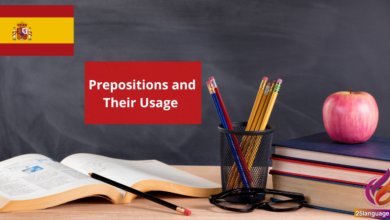How to Use “Gustar” and Similar Verbs

understanding how to express preferences in Spanish opens teh door to meaningful conversations and deeper cultural connections. Unlike in English, where we say “I like,” Spanish uses the verb “gustar,” which translates to “to please.” This lesson will unravel the intriguing structure behind “gustar” and similar verbs, empowering you to articulate what you enjoy in a way that’s both natural and authentic. Get ready to enhance your Spanish skills and share your passions with confidence!
Understanding Gustar and Its Friends in Spanish
In Spanish,the verb gustar means “to please,” and it reflects a different structure compared to English. Instead of saying “I like the book,” which makes “I” the subject and “the book” the object, in Spanish, we express this as “The book pleases me,” or Me gusta el libro. Here, “the book” (el libro) is the subject, and the verb agrees with it in number. If you like multiple books, you would say Me gustan los libros (The books please me). Key points to remember include:
- The subject of the sentence is what is liked.
- The verb gustar must agree in number with the subject.
- Use indirect object pronouns (me, te, le, nos, les) to indicate who likes something.
| Spanish Example | Rule | English Translation |
|---|---|---|
| Me gusta la música | Singular subject: ‘la música’ | I like the music |
| Te gustan las películas | Plural subject: ‘las películas’ | You like the movies |
| Le gusta el chocolate | Indirect object ‘le’ for ‘he/she’ | He/She likes chocolate |
| Nos gustan los deportes | Plural subject: ‘los deportes’ | We like sports |
Besides gustar, there are similar verbs that work likewise, ofen referred to as “gustar’s friends.” These include encantar (to love), interesar (to interest), and fascinar (to fascinate). Each follows the same pattern; for example, Nos encanta la pizza (We love pizza) and Les interesa la historia (They are interested in history). The same structure applies: the subject influences the verb form, and the indirect object pronoun still denotes who experiences the feeling. Remember these key points:
- Each friend of gustar follows the same subject-verb agreement rules.
- Choose the correct indirect object pronoun based on the subject.
Mastering the Art of Indirect Object Pronouns
Indirect object pronouns in Spanish are used to indicate to whom or for whom an action is performed. They are essential for conveying meaning clearly and avoiding repetition. The indirect object pronouns in Spanish are:
- me – to me
- te – to you (singular, familiar)
- le – to him/her/you (formal)
- nos – to us
- os – to you all (informal in Spain)
- les – to them/you all (formal)
To use an indirect object pronoun, you typically place it before the conjugated verb. for example, in the sentence le doy el libro a Juan (I give the book to Juan), “le” is the indirect object pronoun that refers to Juan (to him). The sentence can be rewritten as Le doy el libro (I give him the book), eliminating the need for the phrase “a Juan” when the context is clear.
Another example is: te voy a contar un secreto (I am going to tell you a secret).Here, “te” is the indirect object pronoun that signifies “to you.” if you want to replace the indirect object with the pronoun, you can simply say: Te lo voy a contar (I am going to tell it to you), where “lo” refers to “the secret.” It’s critically important to remember that when a conjugated verb is combined with an infinitive, the indirect object pronoun can either go before the conjugated verb or attached to the end of the infinitive.
| Spanish Example | Indirect Object Pronoun | English Translation |
|---|---|---|
| Me das el balón. | me | You give me the ball. |
| Nos envían una carta. | nos | They send us a letter. |
| Te quiero mostrar algo. | te | I want to show you something. |
| Les compramos flores. | les | We buy them flowers. |
Practical Tips for Using Gustar and Similar Verbs
one of the most common challenges for English speakers learning Spanish is mastering the verb gustar and similar verbs that express preferences, feelings, and reactions. Unlike English, where the subject typically comes first, in Spanish, the structure is often reversed. This means that the person or thing doing the liking (the subject) comes after the verb. For instance, the sentence “I like pizza” translates to Me gusta la pizza, where me indicates the person experiencing the feeling (me/I), and gusta agrees in number with la pizza (what is liked). when expressing preferences about multiple items, we use the plural form: Me gustan los libros (I like books).
to use gustar and similar verbs accurately, remember the following key points:
- Pronouns: Identify who likes what by using indirect object pronouns (me, te, le, nos, les).
- Agreement: Ensure that the verb gustar agrees with the noun that follows it in number.
- Other verbs: Similar verbs include interesar (to interest), encantar (to love), and importar (to matter).
Here’s a simple table summarizing these concepts:
| Spanish Example | rule | English Translation |
|---|---|---|
| Me gusta el perro. | gustar agrees with the singular subject (el perro). | I like the dog. |
| Te gustan las manzanas. | gustar agrees with the plural subject (las manzanas). | You like apples. |
| Nos encanta el chocolate. | encantar is used to express a strong liking and agrees with the singular subject. | We love chocolate. |
| Les interesa la historia. | interesar agrees with the singular subject (la historia). | They are interested in history. |
Enhancing Your Spanish with Flavorful verbs
When enhancing your Spanish vocabulary,immersing yourself in verbs that add flavor to your language use can make your conversations more dynamic. Verbs like saborear (to savor), degustar (to taste), and condimentar (to season) are rich in meaning and context, allowing you to express not just actions but also feelings associated with experiences. As a notable example, you might say, “Me gusta saborear cada bocado de la comida” which translates to “I like to savor every bite of the food.” Another example is, “Vamos a degustar un nuevo plato” meaning “We are going to taste a new dish.” these verbs help you articulate a deeper engagement with food and experiences beyond just eating.
Understanding how to use these flavorful verbs also involves recognizing their conjugation patterns. Most Spanish verbs fall into regular categories, like -ar, -er, and -ir verbs. Here are some conjugation rules for your reference:
| Spanish Verb | Conjugation Rule | English Translation |
|---|---|---|
| saborear | yo saboreo, tú saboreas, él/ella saborea | to savor |
| degustar | yo degusto, tú degustas, él/ella degusta | to taste |
| condimentar | yo condimentaré, tú condimentarás, él/ella condimentará | to season |
By mastering these verbs, you can enhance not just your vocabulary but also your ability to convey satisfaction and enjoyment in Spanish. Remember to practice using them in different tenses and contexts to enrich your conversational skills.
To Conclude
hoy hemos explorado el fascinante mundo de “gustar” y otros verbos similares en español. A lo largo de nuestra lección, hemos aprendido que en español, los verbos como “gustar” requieren una estructura diferente a la del inglés, donde el sujeto y el objeto de la acción se invierten. Hemos practicado cómo utilizar “gustar” para hablar sobre preferencias y gustos, recordando que es esencial considerar la concordancia entre el verbo y el sujeto. Además, descubrimos que existen muchos otros verbos que funcionan de manera similar, como “encantar,” “interesar,” y “molestar,” lo que nos permite expresar nuestras ideas de manera más rica y variada.
Ahora que tienes las herramientas necesarias para usar estos verbos correctamente, te animo a que practiques y los incorpores en tu conversación diaria. No te desanimes si al principio te resulta un poco complicado; con la práctica, te volverás más cómodo y confiado. Recuerda que cada pequeño paso te acerca más a dominar el español. ¡Sigue adelante y diviértete explorando y utilizando el lenguaje! ¡Buena suerte!





























